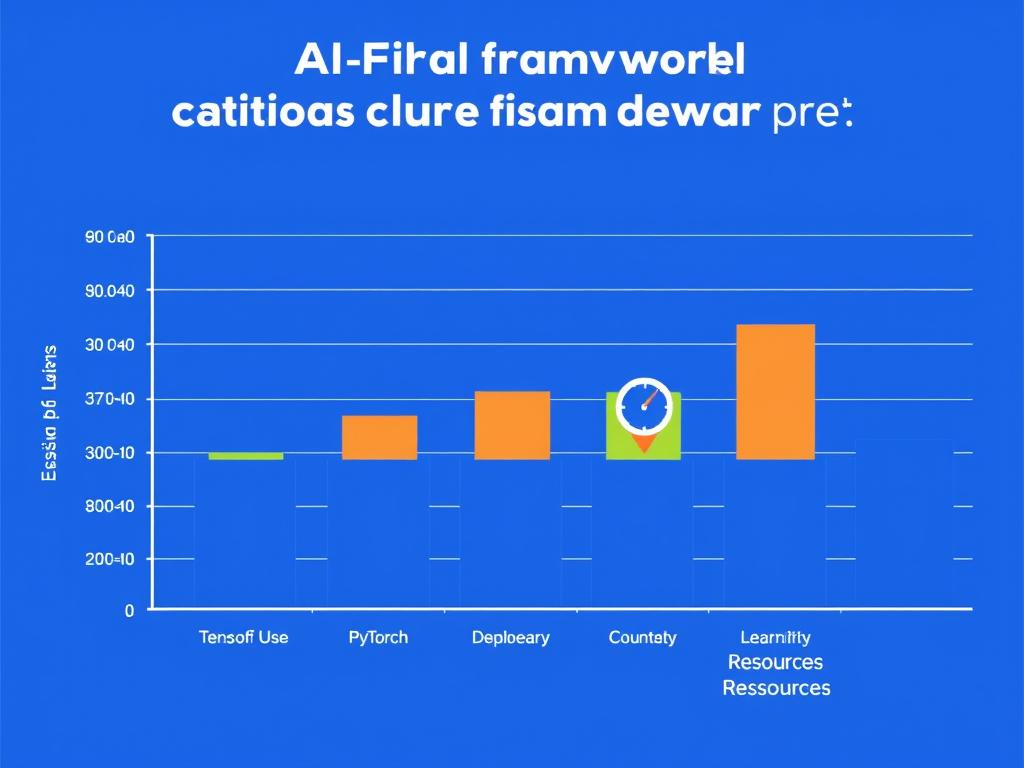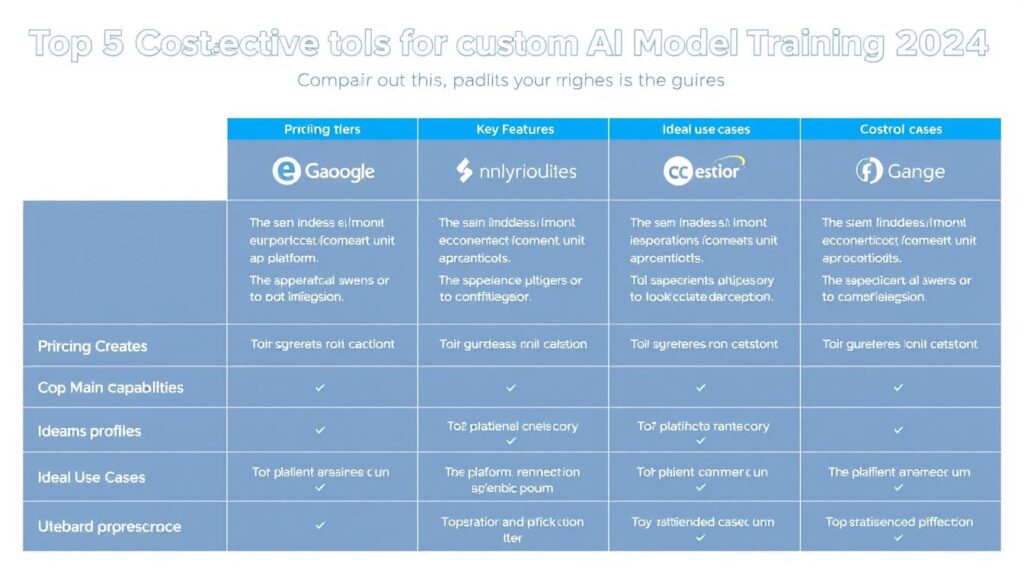Table of Contents
Why Your Business Needs Custom AI Models
While pre-built AI solutions offer convenience, they often lack the precision and specificity required for unique business challenges. Custom AI models provide targeted solutions that align perfectly with your business objectives.
Custom AI Model Advantages
- Tailored to your specific business challenges and data
- Higher accuracy for your particular use cases
- Proprietary advantage over competitors using generic solutions
- Ability to incorporate domain-specific knowledge
- Full control over model development and improvement
Off-the-Shelf AI Limitations
- Generic capabilities not optimized for your specific needs
- Limited customization options
- Potential data privacy concerns with third-party solutions
- Subscription costs that increase as your usage grows
- No competitive advantage as competitors can use the same tools
Not sure if custom AI is right for your business?
Take our quick assessment to determine if custom AI model training would benefit your specific business case.
Step-by-Step Custom AI Model Training Process
Training a custom AI model involves several critical stages, each requiring careful planning and execution. The following comprehensive process will guide you through each step of custom AI model training for your business.

1. Data Collection & Preparation
The foundation of any successful custom AI model training process is high-quality, relevant data. Your model can only be as good as the data it learns from, making this initial step crucial.
Data Collection Methods
- Internal databases: Leverage existing customer records, transaction data, and operational metrics
- Web scraping: Gather publicly available information relevant to your industry
- Sensors and IoT devices: Collect real-time data from physical environments
- Third-party datasets: Purchase or access specialized data collections
- Synthetic data generation: Create artificial data when real data is limited
Data Preparation Tools
- Pandas: Python library for data manipulation and cleaning
- OpenRefine: Tool for working with messy data
- Trifacta: Data wrangling platform for preparing structured and unstructured data
- Talend: Open-source data integration platform
- Databricks: Unified analytics platform for large-scale data processing
Data Formats for AI Training
Depending on your model type, you’ll need data in specific formats:
- Tabular data: CSV, Excel, SQL databases (for regression/classification models)
- Text data: TXT, JSON, XML (for NLP models)
- Image data: JPG, PNG, TIFF (for computer vision models)
- Audio data: WAV, MP3, FLAC (for speech recognition models)
- Time-series data: CSV with timestamps, specialized formats (for forecasting models)
“The quality of your training data directly determines the quality of your AI model. Invest time in proper data collection and cleaning before proceeding to model development.”
Pro Tip: Data Cleaning Checklist
- Remove duplicate entries to prevent bias
- Handle missing values through imputation or removal
- Normalize numerical features to a common scale
- Encode categorical variables appropriately
- Check for and remove outliers that could skew results
- Balance class distributions for classification problems
- Split data into training, validation, and test sets (typically 70/15/15)
2. Framework Selection
Choosing the right framework for your custom AI model training is a critical decision that impacts development speed, performance, and deployment options.
| Framework | Best For | Learning Curve | Performance | Community Support |
| TensorFlow | Production deployment, mobile applications | Moderate | High | Extensive |
| PyTorch | Research, rapid prototyping | Low to Moderate | High | Growing rapidly |
| Keras | Beginners, quick implementation | Low | Moderate | Good |
| Scikit-learn | Traditional ML algorithms | Low | Moderate | Excellent |
| Custom APIs (OpenAI, Google AI) | Fine-tuning existing models | Low | High | Vendor-dependent |

3. Model Architecture Design
The architecture of your custom AI model determines its capability to learn patterns from your data and make accurate predictions. Designing an appropriate architecture requires understanding your specific business problem and data characteristics.

Common Model Architectures
- Feedforward Neural Networks: For structured data and basic classification/regression
- Convolutional Neural Networks (CNNs): For image and video processing
- Recurrent Neural Networks (RNNs): For sequential data like text or time series
- Transformers: For advanced natural language processing tasks
- Generative Adversarial Networks (GANs): For generating new content
Architecture Design Considerations
- Problem complexity: Determines depth and width of the network
- Available data: Larger models require more training data
- Computational resources: Complex architectures need more processing power
- Inference speed requirements: Affects model size and complexity
- Interpretability needs: Simpler models are easier to explain
Pro Tip: Start Simple
Begin with the simplest model architecture that could reasonably solve your problem, then incrementally increase complexity only if performance improvements justify the added computational cost. This approach saves resources and often results in more robust models.
4. Training Environment Setup
Setting up the right training environment is crucial for efficient custom AI model training. Your choice between cloud-based and on-premises solutions depends on your specific requirements, budget, and existing infrastructure.
| Factor | Cloud-Based Training | On-Premises Training |
| Initial Cost | Low (pay-as-you-go) | High (hardware investment) |
| Scalability | Excellent (on-demand resources) | Limited (fixed hardware) |
| Data Security | Vendor-dependent | Full control |
| Maintenance | Handled by provider | Internal responsibility |
| Long-term Cost | Can be higher for continuous usage | Lower after initial investment |
| Setup Time | Minutes to hours | Days to weeks |

Popular Cloud Platforms for AI Training
AWS SageMaker
Comprehensive platform with built-in algorithms and support for all major frameworks. Offers automatic model tuning and distributed training capabilities.
Google AI Platform
Seamless integration with TensorFlow and other Google services. Provides AutoML capabilities for users with limited ML expertise.
Microsoft Azure ML
Enterprise-focused platform with strong integration with other Microsoft products. Features automated ML and MLOps capabilities.
5. Validation & Testing Protocols
Proper validation and testing are essential to ensure your custom AI model performs reliably in real-world scenarios. Implementing robust protocols helps identify and address issues before deployment.

Key Validation Techniques
- Cross-validation: Split your data into multiple folds and train/test on different combinations to ensure model robustness.
- Hyperparameter tuning: Systematically search for the optimal combination of model parameters using techniques like grid search or Bayesian optimization.
- Regularization: Apply techniques like dropout, L1/L2 regularization to prevent overfitting to training data.
- Ensemble methods: Combine multiple models to improve overall performance and reduce variance.
- A/B testing: Compare model performance against existing solutions using real-world data.
Pro Tip: Choosing the Right Evaluation Metrics
Select evaluation metrics that align with your business objectives:
- Classification: Accuracy, Precision, Recall, F1-Score, AUC-ROC
- Regression: MAE, MSE, RMSE, R-squared
- Ranking: NDCG, MAP, MRR
- Clustering: Silhouette Score, Davies-Bouldin Index
- NLP: BLEU, ROUGE, Perplexity
Ready to implement your custom AI model?
Download our comprehensive implementation checklist to ensure you don’t miss any critical steps in your custom AI model training journey.
Best Practices for Custom AI Model Training
Implementing these industry-proven best practices will help you avoid common pitfalls and maximize the effectiveness of your custom AI model training efforts.

Real-World Business Use Cases
Retail

Challenge: A national retailer struggled with inventory management across 500+ locations, leading to stockouts and excess inventory.
Solution: Implemented a custom AI model trained on historical sales data, seasonal trends, and local events to predict demand at the store level.
Results: 32% reduction in stockouts, 18% decrease in excess inventory, and $4.2M annual savings in carrying costs.
Healthcare

Challenge: A hospital network needed to improve early detection of diabetic retinopathy to prevent vision loss in patients.
Solution: Developed a custom computer vision model trained on thousands of retinal images to detect subtle signs of the condition.
Results: 91% detection accuracy, 45% earlier diagnosis on average, and estimated $2.3M annual savings in treatment costs.
Logistics

Challenge: A logistics company faced rising fuel costs and delivery delays due to inefficient route planning.
Solution: Implemented a custom AI model that optimized routes based on traffic patterns, weather conditions, and delivery priorities.
Results: 23% reduction in fuel consumption, 17% increase in on-time deliveries, and $3.1M annual operational savings.
Common Pitfalls to Avoid
- Data leakage: Accidentally including test data information in the training process
- Ignoring bias: Failing to identify and address biases in training data
- Overengineering: Creating unnecessarily complex models when simpler ones would suffice
- Neglecting documentation: Poor documentation of model design, training process, and decisions
- Insufficient monitoring: Not implementing proper monitoring after deployment
Top 5 Cost-Effective Tools for Custom AI Model Training in 2024
These platforms provide accessible entry points for businesses looking to implement custom AI model training without massive upfront investments.

1. Google Colab Pro
- Starting price: $9.99/month
- Best for: Small to medium-sized businesses with limited hardware
- Key features: Free GPU/TPU access, integration with Google Drive, collaborative notebooks
- Limitations: Runtime restrictions, limited persistent storage
- Ideal use case: Prototyping and training moderate-sized models
2. Hugging Face
- Starting price: Free tier available, Pro from $9/month
- Best for: NLP-focused applications and fine-tuning existing models
- Key features: Pre-trained models, datasets, collaborative tools
- Limitations: Primarily focused on NLP and computer vision
- Ideal use case: Fine-tuning language models for specific business domains
3. Azure ML Studio
- Starting price: Pay-as-you-go, free tier available
- Best for: Microsoft-centric organizations with existing Azure infrastructure
- Key features: Drag-and-drop interface, automated ML, enterprise security
- Limitations: Learning curve for non-Azure users
- Ideal use case: Enterprise-grade model development with compliance requirements
4. H2O.ai
- Starting price: Open-source core, enterprise pricing varies
- Best for: Data-rich companies needing automated ML capabilities
- Key features: AutoML, explainable AI, visualization tools
- Limitations: Enterprise features require paid licenses
- Ideal use case: Rapid development of production-ready models with minimal coding
5. Paperspace Gradient
- Starting price: Free tier, Pro from $8/month + usage
- Best for: Teams needing dedicated GPU resources at affordable rates
- Key features: Persistent notebooks, team collaboration, powerful GPUs
- Limitations: Usage-based billing can increase costs for intensive training
- Ideal use case: Training compute-intensive models without hardware investment
Need help choosing the right platform?
Access our detailed comparison guide with platform-specific implementation tips and cost optimization strategies.
Conclusion: Measuring ROI from Custom AI Model Training
Implementing custom AI model training represents a significant investment for any business. To justify this investment, it’s essential to measure and track the return on investment (ROI) across multiple dimensions.

ROI Calculation Template
Use this framework to calculate the potential ROI of your custom AI model training initiative:
| Cost Category | Description | Calculation Method |
| Initial Development | Data collection, cleaning, model development | Staff hours × hourly rate + external services |
| Infrastructure | Computing resources for training and deployment | Cloud/hardware costs + maintenance |
| Ongoing Maintenance | Model updates, retraining, monitoring | Monthly staff hours × hourly rate + infrastructure |
| Benefit Category | Description | Calculation Method |
| Efficiency Gains | Time saved through automation | Hours saved × hourly rate |
| Error Reduction | Cost savings from fewer mistakes | Error reduction % × average error cost |
| Revenue Increase | Additional sales from improved targeting/recommendations | Conversion improvement % × average transaction value |
| Competitive Advantage | Market share gains from unique capabilities | Market share increase % × market value |
The ROI formula: (Total Benefits – Total Costs) / Total Costs × 100%
“The most successful AI implementations are those that align closely with core business objectives and deliver measurable value. Custom AI models, when properly trained and deployed, can provide that value in ways generic solutions simply cannot.”
Custom AI model training represents a significant opportunity for businesses to gain competitive advantages through tailored artificial intelligence solutions. By following the structured approach outlined in this guide—from data collection and preparation through model architecture design and validation—organizations can develop AI models that address their specific challenges and deliver measurable ROI.
The key to success lies in maintaining a balance between technical excellence and business alignment. Your custom AI model should not only perform well from a technical perspective but should also directly contribute to your organization’s strategic objectives.
Calculate Your Custom AI ROI
Download our interactive ROI calculator template to estimate the potential return on your custom AI model training investment.
Frequently Asked Questions About Custom AI Model Training
How long does it typically take to train a custom AI model?
The timeline for custom AI model training varies significantly based on several factors: the complexity of the problem, the amount of data available, the chosen model architecture, and the computational resources allocated. Simple models might be trained in hours or days, while complex deep learning models could take weeks or even months to reach optimal performance.
What’s the minimum amount of data needed for effective custom AI model training?
The minimum data requirements depend on the complexity of your problem and model. As a general guideline, supervised learning typically requires at least a few thousand labeled examples, with more complex problems needing tens or hundreds of thousands of examples. Transfer learning and fine-tuning pre-trained models can significantly reduce these requirements, sometimes allowing effective models with just hundreds of examples.
How do I know if my business needs a custom AI model versus an off-the-shelf solution?
Consider a custom AI model when: 1) Your problem is unique to your business or industry, 2) Off-the-shelf solutions consistently underperform for your specific use case, 3) You have proprietary data that could provide competitive advantages, 4) You need full control over the model’s behavior and outputs, or 5) You require specialized features not available in existing solutions. Start with off-the-shelf options and move to custom development when their limitations become clear.
What ongoing maintenance does a custom AI model require?
Custom AI models require regular maintenance including: 1) Performance monitoring to detect degradation, 2) Periodic retraining with new data to prevent concept drift, 3) Validation against changing business requirements, 4) Infrastructure updates to maintain security and efficiency, and 5) Documentation updates to reflect changes. Budget for ongoing maintenance costs of approximately 15-25% of the initial development investment annually.
How can I ensure my custom AI model is ethical and unbiased?
Ensuring ethical AI requires a multi-faceted approach: 1) Use diverse and representative training data, 2) Implement regular bias testing across different demographic groups, 3) Establish clear ethical guidelines before development begins, 4) Include diverse perspectives in the development team, 5) Implement transparency mechanisms to explain model decisions, and 6) Create feedback channels for users to report potential issues. Consider forming an ethics committee for oversight of AI initiatives.










